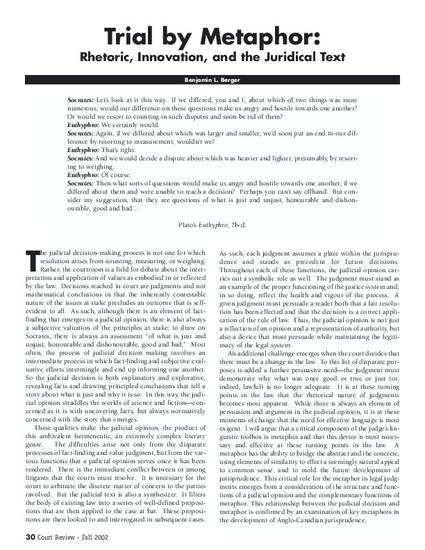
The judicial decision-making process is not one for which resolution arises from counting, measuring, or weighing. Rather, the courtroom is a field for debate about the interpretation and application of values as embodied in or reflected by the law. Decisions reached in court are judgments and not mathematical conclusions in that the inherently contestable nature of the issues at stake precludes an outcome that is selfevident to all. As such, although there is an element of factfinding that emerges in a judicial opinion, there is also always a subjective valuation of the principles at stake; to draw on Socrates, there is always an assessment “of what is just and unjust, honourable and dishonourable, good and bad.” Most often, the process of judicial decision making involves an intermediate process in which fact-finding and subjective evaluative efforts intermingle and end up informing one another. So the judicial decision is both explanatory and explorative, revealing facts and drawing principled conclusions that tell a story about what is just and why it is so. In this way, the judicial opinion straddles the worlds of science and fiction—concerned as it is with uncovering facts, but always normatively concerned with the story that emerges.
Available at: http://works.bepress.com/benjamin_berger/132/
